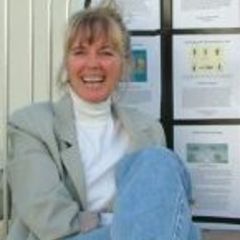Faculty
Deby Cassill
Campus Associate Chair (St. Petersburg campus)
& Associate Professor

CONTACT
St. Petersburg Campus
Office: URL 108 (knock loudly)
Lab: URL 105 & 105A
Phone: (727) 424-1424
Email: cassill@usf.edu
Curriculum Vitae
| Specialty Area | Recent Publications |
|---|---|
| Key Research Areas: survival behaviors; reproductive behaviors; maternal investment strategies; ecology & evolution; conservation biology; lifetime replacement fitness. |
EDUCATION
Ph.D., Biology, Florida State University, 1996
M.S., Biology, Florida State University, 1991
B.S., Biology, Florida State University, 1988 (magna cum laude)
M.P.A., University of West Florida, 1980
Florida Teacher's Certificate; Special Education, Rollins College, 1972
B.A., Psychology, University of Iowa, 1969
TEACHING
ZOO 4512 Sociobiology
ZOO 4513 Animal Behavior
Research is an important component on a student's resume for future jobs, graduate school, or professional programs. Both of my courses require that students complete an original research project with a poster and presentation at our Annual Undergraduate Research Conference.
RESEARCH
I study animal behavior and have developed an empirical model explaining the evolution
of altruism, social systems, and maternal investment strategies.
My research is bifurcated into two parallel lines of research: (1) I explore the “triggers”
of behavior including survival by foraging, cooperation, sharing, altruism, competition,
stealing, murder, and predation as well as reproduction by monogamy-polygamy, oviparity-viviparity,
uniparity-multiparity, semelparity-interoparity, and maternal abandonment-extended
maternal care. (2) I explore the evolution of behaviors. My goal is to extend Darwin’s
theory of natural selection to include not only his theory on the fission of populations
into new species by competition for scarce resources, but the fusion of populations
into hierarchical societies by cooperation in seasonal environments with high predation.
I accomplished that integration with my model of maternal risk-management (Cassill
2019).
Students in my lab are using the maternal risk-management model to test predictions on the natural selection pressures (risk factors) that favor the fusion of populations into hierarchical societies in ants, social spiders, bees, elephants, and whales. Other students are using the model to test predictions on the natural selection pressures that favor the abandonment of eggs by sea turtles versus extended maternal care eggs and hatchlings by crocodiles. Other students are using the model to rank species at risk of extinction based on each species’ population replacement capacity—i.e., lifetime replacement fitness defined as the time it takes for a breeding female and her mates to ensure the survival of one mature breeding daughter and one mature outbreeding son (ω = 2).
RECENT PUBLICITY
Florida's Deadliest - Is the Red Widow Spider Deadly?
Video from biology student Eli McEuen
New York Times: Brown Widows Are Winning the Fight for Your Attic and Garage
Hattiesburg American: Did Mississippi escape the lovebugs? Nope, they're just late. Here's why.
Fox 13 Tampa Bay: USF professor calls Amazon wildfires a 'catastrophe of huge proportions'
WTSP: Can local man's product save bees from sting of extinction? He says yes